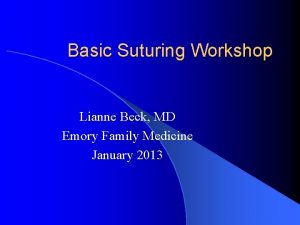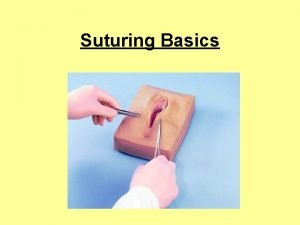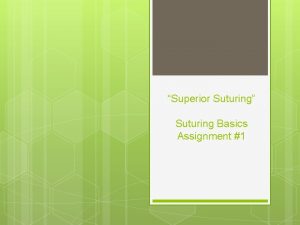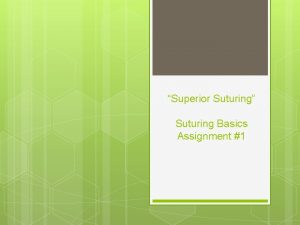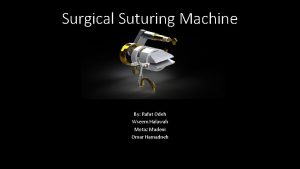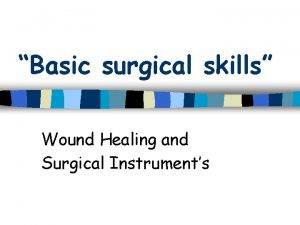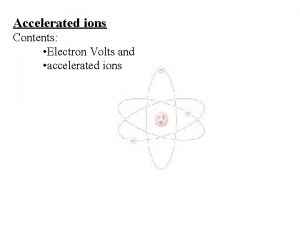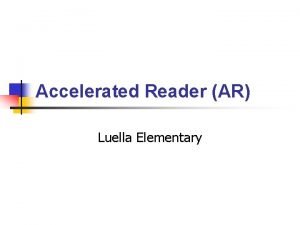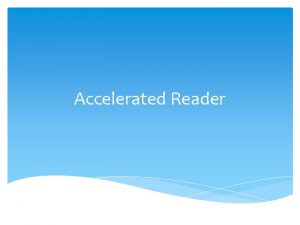Accelerated Skills Preparation for Surgical Internship Suturing Skills












































- Slides: 44

Accelerated Skills Preparation for Surgical Internship: Suturing Skills and Surgical Instruments L. Michael Brunt, M. D. Professor of Surgery Washington University School of Medicine St. Louis, Missouri

Suturing Skills Curriculum • Surgical instruments • Suture material • Suturing techniques

Classification of Suture Material • Natural vs Synthetic (last 30 years) • Absorbable vs Nonabsorbable • Braided vs Monofilament

Basic Suture Materials Absorbable • Natural: – Catgut – Plain – Chromic Nonabsorbable • Natural – Silk – Cotton – Metals (stainless steel) • Synthetic: • Synthetic – Polygolic acid (Dexon) – Dacron (Tevdek, Ethibond, Tycron) – Polyglactic acid (Vicryl) – Nylon (Ethilon, Dermalon, Braided – Poly-para-dioxanone (PDS) Nurolon) – Modified polyglycolic acid – Polyprolene (Prolene, Surgilene) (Maxon )

Braided vs Monofilament Suture Braided Monofilament • Absorbable: – Dexon – Vicryl • Absorbable: – PDS – Maxon • Nonabsorbable – Silk – Dacron (Ethibond, Tevdek) – Braided nylon (Nurolon) • Nonabsorbable: – Nylon (Ethilon, Dermalon) – Polyprolene (Prolene, Surgilene)

Factors Affecting Choice of Suture Material • • • Strength of suture material over time Time interval material will be present Strength sufficient for healing before suture disappears or loses strength? Suture reactivity Local wound factors Handling properties

Natural vs Synthetic Suture Natural • • • Natural material Absorbs quickly Strength retention More reactive Material inconsistency Increased tissue trauma Synthetic Pro Con • • Pliability and strength Strength retention Absorption (hydrolysis) Patient reactivity • Stays in body longer

Absorbable Sutures Suture Type Classification Sites for Use # Knots Catgut collagen Natural SQ, GI 3 or 4 Polyglycolic acid (Dexon/Vicryl) Braided, synthetic SQ, GI, fascia, vessel ligature 4 PDS/Maxon Synthetic, monofilament Fascia, GI, Biliary/pancreas 6 -8

Non-Absorbable Sutures Suture Type Classification Sites for Use # Knots Silk Natural Vessel ligature, GI 3 Dacron Braided, synthetic Hernia repair, fascial closure, fundoplication 5 Polypropylene, Nylon Synthetic, monofilament Skin, fascia, hernia repair, vascular anastomosis 6 -8

• Tensile strength – refers to the amount of strength “in vivo” that a suture material has retained. This can be measured in days and as a percentage of original strength. Exp: 21 -28 days 50% at 3 weeks • Absorption = the loss of mass of the material in tissue as measured in days, Exp: 21 -28 days 50% at 3 weeks

Suture Properties: Definitions • Tensile strength – refers to the amount of strength “in vivo” that a suture material has retained. This can be measured in days and as a percentage of original strength. Exp: 21 -28 days 50% at 3 weeks • Absorption = the loss of mass of the material in tissue as measured in days, Exp: 21 -28 days 50% at 3 weeks

Suture Breaking Strength Over Time PDS Chromic Dexon Plain

Loss of Tensile Strength in Nonabsorbable Sutures

Suture Sizes

Suture Needles

Non-Cutting Needles

Suture… Control Release--- POPS! (Pop-offs) Pop off. . . Don’t pop off. . . Running suture: Non-popoff/swaged on Interrupted suture: popoff

Suture…

Suture… Use

Suture… Order # Use

Suture… Order # Use Size (metric)

Suture… Order # Use Size (metric) Suture Material

Suture… Order # Use Size (metric) Suture length Suture Material

Suture… Order # Use Size (metric) Suture Material Needle cross section Suture length

Suture… Order # Use Size (metric) Suture length Suture Material Needle cross section Needle sales type(reflects size)

Suture… Order # Use Size (metric) Suture length Suture Material Needle cross section Needle sales type(reflects size) Approximate needle size & shape

Suture… Order # Use Size (metric) Suture length Needle curve Suture Material Needle cross section Needle sales type(reflects size) Approximate needle size & shape

Suture… Order # Use Size (metric) Suture length Needle curve Needle diameter Suture Material Needle cross section Needle sales type(reflects size) Approximate needle size & shape

Suture Lab Goals 1) Proper instrument handling – Instrument/needle setting technique – Safety tips 2) Suturing technique – Proper needle insertion into tissue and needle/hand rotation – Tying with needle still on (free hand instrument)

Suture Lab Goals 3) Types of stitches – Simple interrupted – Interrupted vertical mattress – Subcuticular – Simple running – Running vertical mattress – Forehand backhand techniques 4) Knot tying – One and two handed knots – Instrument pass

Skin Stapling

Simple Interrupted Suture

Interrupted Vertical Mattress

Interrupted Vertical Mattress

Interrupted Horizontal Mattress

Figure of 8 (Interrupted Fascial Closure)

Simple Continuous Closure

Continuous Locking Suture

Continuous vs Interrupted Suture Continuous Suture Pros Cons • May be rapidly placed • Avoids tying multiple knots, reduces knots in wound • Even distribution of tension along full length • More hemostatic • If it breaks, the whole suture line may disrupt • Long amount of suture to deal with • Interstices of braided sutures could harbor infection along the suture line

Continuous vs Interrupted Suture Pros • Remaining sutures protect wound if an interrupted suture comes untied • Infection cannot travel along suture length Cons • More operating time due to cutting and tying of each suture individually • Each suture could have a variable amount of tension • Individual knots increase amount of foreign body in the wound

Burying Knots

Suture Removal

Suturing Movie • Click the projector button to view the suturing movie

Sources John Stuart Brown, MBE, Minor Surgery, A Text and Atlas, Fourth Edition, Oxford University Press, New York, 2000. Jameson L. Chassin, MD, Operative Strategy in General Surgery, An Expositive Atlas, Second Edition, Springer. Verlag, New York, 1994. A. K. Qayumi, MD, Ph. D, Basic Surgical Techniques, An Illustrated Manual, Q&Q Publishing, Vancouver, Canada, 2000. Ethicon, Inc. , A Johnson and Johnson Company, Somerville, NJ, USA, www. ethiconinc. com.
 Jenis suturing
Jenis suturing Lianne beck
Lianne beck Vertical
Vertical Läkarutlåtande för livränta
Läkarutlåtande för livränta Treserva lathund
Treserva lathund Påbyggnader för flakfordon
Påbyggnader för flakfordon Tack för att ni lyssnade
Tack för att ni lyssnade En lathund för arbete med kontinuitetshantering
En lathund för arbete med kontinuitetshantering Egg för emanuel
Egg för emanuel Atmosfr
Atmosfr Programskede byggprocessen
Programskede byggprocessen Rutin för avvikelsehantering
Rutin för avvikelsehantering Mitos steg
Mitos steg Presentera för publik crossboss
Presentera för publik crossboss Myndigheten för delaktighet
Myndigheten för delaktighet Mall för debattartikel
Mall för debattartikel Kung som dog 1611
Kung som dog 1611 Densitet vatten
Densitet vatten Tack för att ni har lyssnat
Tack för att ni har lyssnat Tobinskatten för och nackdelar
Tobinskatten för och nackdelar Tack för att ni lyssnade bild
Tack för att ni lyssnade bild Referat mall
Referat mall Karttecken färger
Karttecken färger Mjälthilus
Mjälthilus Multiplikation med decimaltal uppgifter
Multiplikation med decimaltal uppgifter Rbk fuktmätning
Rbk fuktmätning Tryck formel
Tryck formel Elektronik för barn
Elektronik för barn Underlag för särskild löneskatt på pensionskostnader
Underlag för särskild löneskatt på pensionskostnader Borra hål för knoppar
Borra hål för knoppar Smärtskolan kunskap för livet
Smärtskolan kunskap för livet Bris för vuxna
Bris för vuxna Trög för kemist
Trög för kemist Vad är ett minoritetsspråk
Vad är ett minoritetsspråk Magnetsjukhus
Magnetsjukhus Indikation för kejsarsnitt på moderns önskan
Indikation för kejsarsnitt på moderns önskan Datorkunskap för nybörjare
Datorkunskap för nybörjare Steg för steg rita
Steg för steg rita Toppslätskivling dos
Toppslätskivling dos Returpilarna
Returpilarna Redogör för vad psykologi är
Redogör för vad psykologi är Mat för unga idrottare
Mat för unga idrottare Lek med geometriska former
Lek med geometriska former Bästa kameran för astrofoto
Bästa kameran för astrofoto Dikt på rim
Dikt på rim

